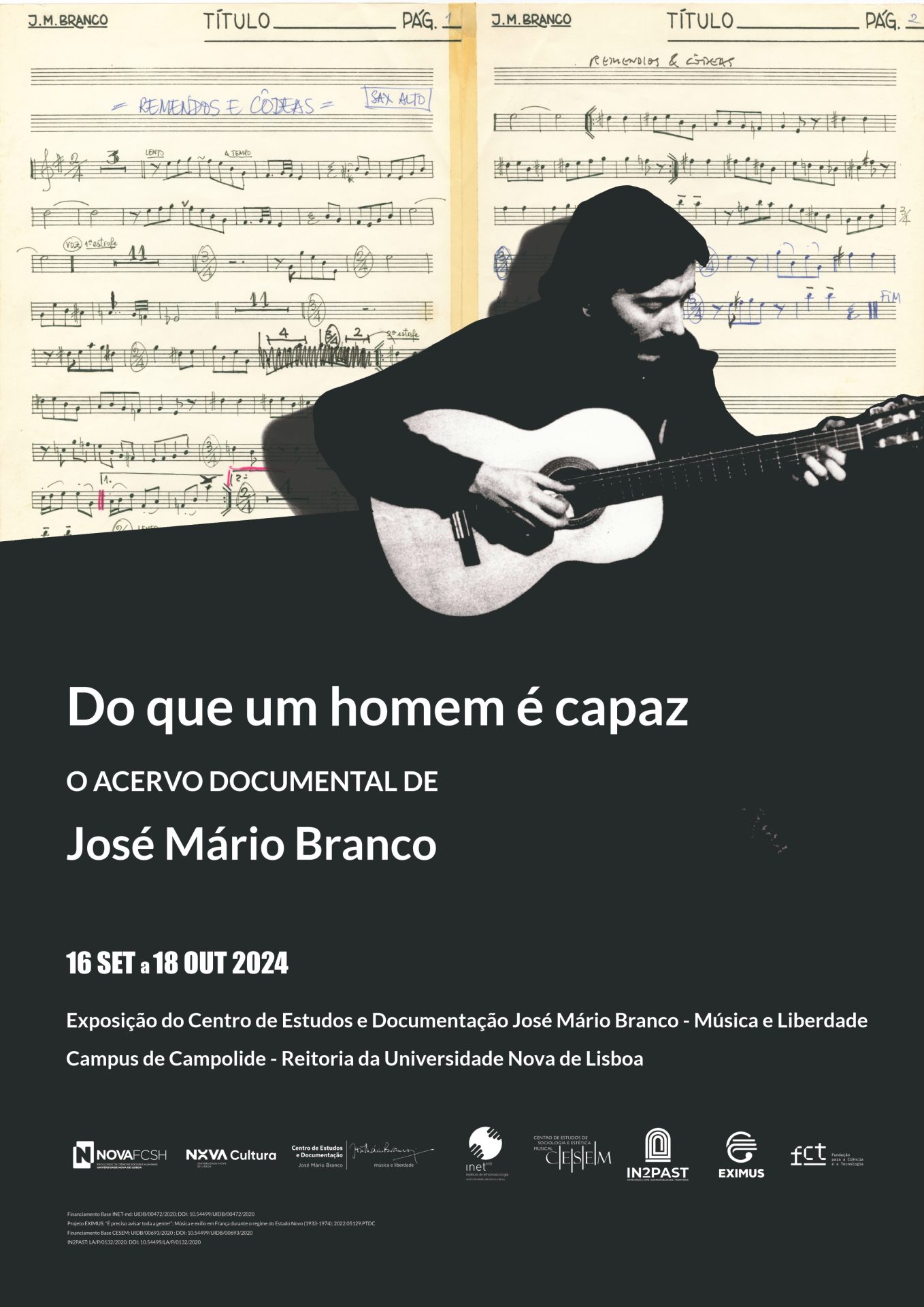On Monday September 16, the exhibition ‘Do que um homem é capaz – o acervo documental de José Mário Branco’ (‘What a man is capable of – José Mário Branco’s Collection’) opens at the Rectory of Universidade NOVA de Lisboa, in the Campolide campus, at 6 pm.
On display until October 18, with free admission, the exhibition shows the singer-songwriter’s estate, which was entrusted by his family to NOVA FCSH (Faculty of Social Sciences and Humanities), and is kept through a partnership between INET-md – Centre for Studies in Music and Dance, CESEM – Centre for Studies in Sociology and Musical Aesthetics and IN2PAST – Associate Laboratory.
This exhibition focuses on the physical and digital documentary collection of José Mário Branco (JMB/1942-2019), composer, lyricist, performer, arranger, and record producer who profoundly influenced the Portuguese musical landscape.
During his exile in France (1963-1974), he began organising folders in which he stored documentation related to the various activities he was involved in, maintaining this practice until the end of his life. Years later, he decided to arrange them into archive boxes, which he kept at his residence.
Given the collaboration that he established with CESEM and INET-md between 2014 and 2019, the family decided to entrust this documentation to NOVA FCSH to be preserved, catalogued, studied, and to continue the digitisation and public availability work initiated by the José Mário Branco Archive, launched in 2018 under the coordination of Manuel Pedro Ferreira. To this end, the José Mário Branco Research and Documentation Center – Music and Freedom (Centro de Estudos e Documentação José Mário Branco – Música e Liberdade, or CEDJMB-ML) was created, with Salwa Castelo-Branco as Chair of the scientific committee.

In the inventory conducted in 2021, 310 folders stored in 57 boxes were identified. JMB could have pre-selected the materials to be archived based on their greater or lesser artistic “nobility,” but he did not: alongside scores, chord charts, lyrics, and concert mappings, the approximately 20,000 sheets in the collection include lists of telephone contacts, receipts and budgets, varied correspondence with publishers, postcards, contracts, scripts for animated series, among other types of documents.
This exhibition aims to offer a brief sample of the richness and variety of this collection and its various types of materials, organized into the following sections:
1. Phonographic production – documentation related to record production
2. Theatre, cinema, and television – documentation regarding activities in these fields
3. Political activity – documentation related to his civic and political journey
4. Phonographic archive – physical media and related items.
CEDJMB-ML now invites you to enter this universe and, through it, glimpse ‘What a Man is Capable of.’
2025 © IN2PAST. All rights reserved.
IN2PAST – Associate Laboratory for Research and Innovation in Heritage, Arts, Sustainability and Territory is funded by FCT – Fundação para a Ciência e a Tecnologia, I. P. under reference LA/P/0132/2020 (DOI 10.54499/LA/P/0132/2020)